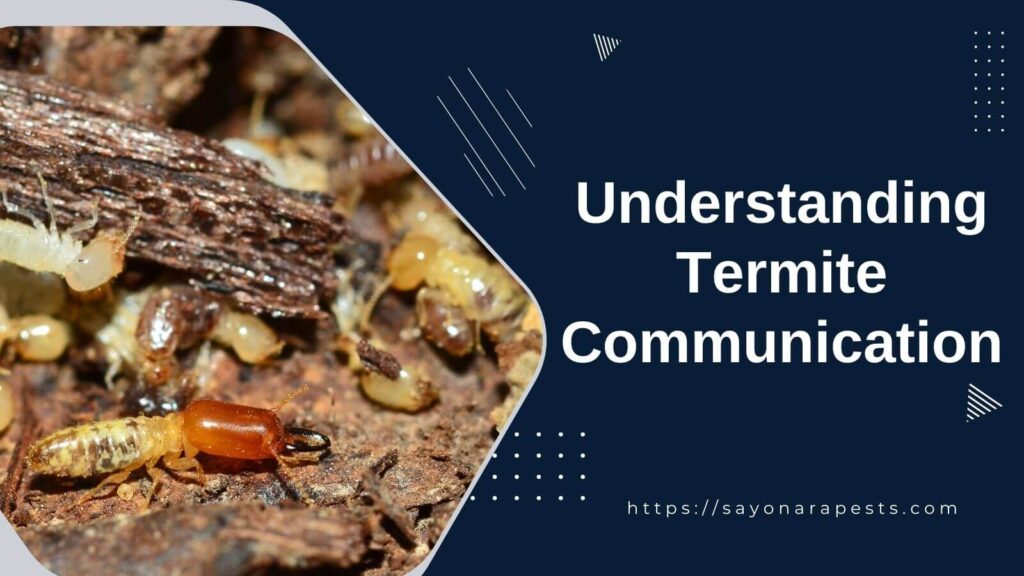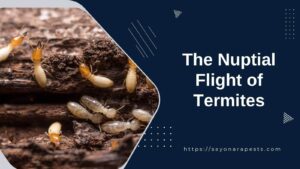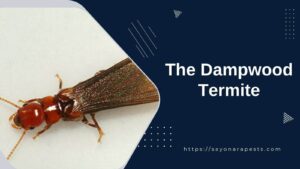In the huge field of animal communication, few things are as interesting to scientists as how termites talk to each other.
It is very important, not just for the field of entomology but also for a better understanding of communication systems in general, to figure out how these tiny creatures interact and share information within their complex social networks.
With their highly organized and cooperative societies, termite colonies are fascinating ways to study how communication has changed and how complicated it has become.
This article will discuss how termite communication takes place, how termites use them, and for what purposes. This will help us understand them more as insects that we usually encounter in our lives.
Pheromones
Pheromones are chemicals that organisms release into the air to get other organisms to act in a certain way.
Pheromones are the primary way that termites, which are very social insects, talk to each other. There are different kinds of chemical signals, each with a different purpose in termite society.
Trail Pheromones
One of the most common types of termite pheromones, called “trail pheromones,” acts as an invisible guide, leading other termites along well-worn paths.
By leaving these pheromones, termites create information highways that make it easier for them to move around in their huge colonies.
The chemicals that make up trail pheromones are different for each type of termite, but their main purpose is always the same. When a termite finds a new place to eat or something interesting in its environment, it will leave pheromones on its way back to the colony.
These pheromones are made up of volatile chemicals that humans can’t smell but that other termites recognize very well.
The trail pheromones help the rest of the termite colony find the same food source by letting them follow the scent trail. As more termites follow the path and add to the chemical trail, it gets stronger and easier for other termites to see.
This process of reinforcement creates a feedback loop because the higher concentration of pheromones draws even more termites to the trail, making what can be thought of as an information highway.
Trail pheromones help termites build these information highways. This is good for the termite colony in many ways. First, it makes them better at finding food by making it take less time and energy to find and use resources.
Termites can quickly find and follow a scent trail to a food source, so they don’t have to search around randomly.
This is especially important for species whose main food source is decaying wood or other organic matter because it helps them make the most of the few and irregularly available resources in their environment.
Aggregation Pheromones
Also, aggregation pheromones are very important for bringing termites together when they are making new colonies or moving. These signals bring termites together, which makes the group stronger and helps termites get along.
Using aggregation pheromones is especially important when a colony is being started.
When a pair of termites that can reproduce, called alates, go to start a new colony, they send out aggregation pheromones to let other termites know they are there and encourage them to join them.
They send out a chemical message that basically says, “Come join me, and we can build a stronger colony together.” So, worker termites and other alates, which are often siblings or close relatives, are drawn to the source of the pheromones.
They quickly gather and form the first core of the new colony.
Moreover, when termites are on the move, either because they are running out of food or because they want to find a new place to live, aggregation pheromones help to keep the group together and help them find their way.
As termites move around and explore their environment, they leave pheromone trails that mark their path and tell their nestmates important information.
These chemical trails help other termites find the group by letting them follow the scent and stay close. This system keeps people from getting lost and keeps the group together, even when they are moving long distances.
Alarm Pheromones
On the other hand, alarm pheromones serve as warnings of danger and quickly alert other termites to threats that are close by.
When a termite finds something that could be dangerous, it sends out alarm pheromones, which make its nestmates react right away. This chemical alarm system allows for quick defense and coordination, protecting the colony from possible harm.
You can’t say enough about how well pheromones help termites talk to each other. Termites use these complicated chemical signals to talk to each other with a high degree of accuracy, even when they can’t see or hear each other.
In addition to serving as warnings of immediate danger, alarm pheromones can also transmit information about the intensity or proximity of a threat.
The concentration of the pheromones released by a termite can indicate the severity of the danger, enabling nestmates to gauge the level of response required.
This dynamic system ensures that the entire termite colony can quickly mobilize its defenses when faced with a significant threat while also conserving energy and resources in less critical situations.
Vibrations and Sounds
In the world of termite communication, vibrations show up as small tremors that echo through the colonies’ underground tunnels and carefully built galleries.
These vibrations, which are caused by the movement of individual termites, are a non-chemical way for termites to talk to each other and can be sent over long distances. Termites use a wide range of vibrational signals, each of which has a different meaning.
For example, alarm signals are fast, high-frequency vibrations that warn the colony of possible dangers. Recruitment signals, on the other hand, are slower, lower-frequency vibrations that call on other termites to do certain tasks.
On the other hand, sounds are made when termites work together and do other things. In addition to the vibrational cues, these sound signals add another layer of communication.
Termite sounds are often quiet and hard to understand, but they carry important information that controls how the whole colony works.
The sounds they make range from soft tapping noises made during rituals to more complicated drumming patterns that go along with building and taking care of their complex nests.
Termites use these sound vibrations in a clever way to send messages about the availability of food and mates and the health of the colony as a whole.
Visual Communication
Termites use many different kinds of visual displays and patterns of behavior to talk to each other. These are all important to their survival and success as highly organized societies.
Termites use body language and posture, which is an interesting part of how they communicate visually. Termites can send different messages by moving and standing in different ways.
For example, when termites are angry, they raise their heads, show their mandibles, or move their bodies in ways that look like they are going to attack. These visual warnings are meant to scare off possible enemies and stop unnecessary fights within the colony.
Overall, termite communication is something that is fascinating to some of us. Termites communicating and having an organized society like ours is already amazing in itself.
However, we must always remember that the knowledge we gain from their communication habits can be utilized against them in order to control their numbers and negative effects on our homes.
By taking advantage of what we already know about pheromones, vibrations, sounds, and visual cues, we can strategize plans and actions with professionals to utilize the different aspects of termite communication to our own advantage











